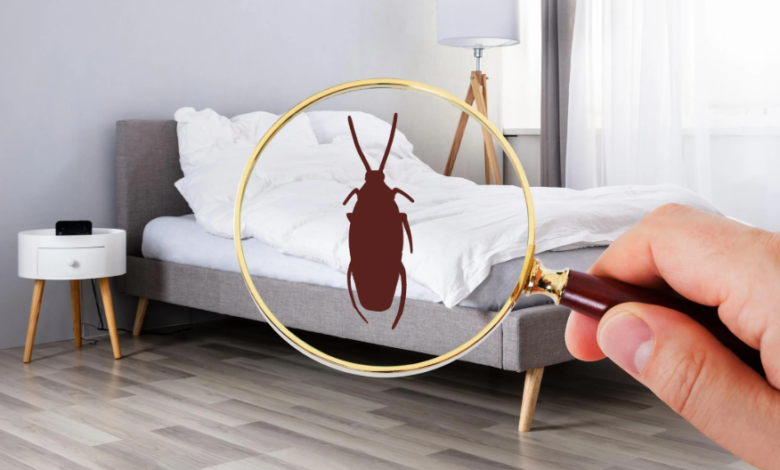How to Avoid Bed Bugs While Traveling: Hotel Safety Guide

Traveling is an exciting experience, but encountering bed bugs can quickly turn a dream vacation into a nightmare. These tiny pests are notorious for hitchhiking on luggage, clothing, and even personal items, making hotels a common hotspot for infestations. Once bed bugs find their way into your belongings, they can follow you home, leading to a costly and stressful extermination process.
Fortunately, with the right precautions, you can significantly reduce the risk of bringing bed bugs back from your travels. This guide will walk you through essential steps to inspect your hotel room, protect your belongings, and prevent an infestation.
Understanding Bed Bugs
Before diving into prevention methods, it’s important to know what you’re dealing with. Bed bugs are small, reddish-brown insects that feed on human blood. They are typically active at night and hide in mattresses, furniture, cracks, and crevices during the day.
Signs of Bed Bugs Include:
- Small reddish or brown stains on sheets (crushed bugs)
- Tiny black dots (fecal spots)
- Shed exoskeletons
- A musty odor in severe infestations
- Itchy, red bite marks on the skin (though not everyone reacts)
Since bed bugs ( væggelus ) are experts at hiding, a thorough inspection is crucial whenever you check into a hotel.
Step 1: Choose Your Hotel Wisely
While bed bugs can be found in any accommodation—from budget motels to luxury resorts—some places have better pest control practices than others.
- Read Reviews: Check recent guest reviews for mentions of bed bugs. Websites like TripAdvisor and Google Reviews often have reports from previous guests.
- Research the Hotel’s Pest Control Policies: Reputable hotels should have regular inspections and professional extermination services on standby.
- Avoid High-Risk Areas: Bed bugs are more common in densely populated cities and heavily trafficked hotels. However, they can appear anywhere, so always stay vigilant.
Step 2: Inspect Your Hotel Room Before Unpacking
Never place your luggage on the bed, couch, or floor immediately after entering your room. Instead, follow these steps:
1. Leave Luggage in the Bathroom
Bathrooms have fewer hiding spots for bed bugs ( væggelus ) due to their tiled surfaces. Place your suitcase in the bathtub or on a luggage rack (after inspecting it) while you check the room.
2. Examine the Bed Thoroughly
- Pull Back the Sheets: Look for blood spots, dark fecal stains, or live bugs along mattress seams, especially near the headboard.
- Check the Mattress & Box Spring: Lift the mattress and inspect the corners and edges. Bed bugs often hide in these areas.
- Inspect the Bed Frame & Headboard: Look in cracks, screw holes, and behind any fabric or upholstery.
See also: Cheapest Way to Ship a Car Cross-Country Without Compromise
3. Check Other Furniture & Common Hiding Spots
- Nightstands & Dressers: Open drawers and examine the corners.
- Couches & Chairs: Check seams, cushions, and underneath furniture.
- Curtains & Carpets: While less common, bed bugs can hide in fabric folds.
- Electrical Outlets & Picture Frames: These pests can squeeze into tiny spaces.
If you find any signs of bed bugs, request a new room immediately—preferably in a different part of the hotel, as infestations can spread.
Step 3: Protect Your Belongings
Even if your room appears clean, it’s wise to take extra precautions:
- Use Hard-Shell Luggage: Bed bugs have a harder time clinging to smooth surfaces compared to fabric suitcases.
- Keep Luggage Elevated: Store your bag on a luggage rack (after checking it for bugs) rather than on the floor or bed.
- Use Sealable Plastic Bags: Pack clothes in large Ziploc bags or compression sacks to prevent bugs from getting inside.
- Bring a Portable Bed Bug Detector: Some travelers use small heaters or traps to lure and detect bed bugs overnight.
Step 4: Prevent Bringing Bed Bugs Home
The last thing you want is to introduce bed bugs into your home. Follow these steps upon returning:
1. Unpack Carefully
- Inspect Luggage Outside: Before entering your home, check your suitcase for any signs of bed bugs.
- Wash All Clothes in Hot Water: Heat kills bed bugs, so wash and dry everything on the highest possible settings, even unworn items.
- Vacuum Your Suitcase: Use a brush attachment to clean seams and pockets before storing it away.
2. Use Heat or Cold Treatment
- Dryer Treatment: If you can’t wash certain items (like shoes or bags), run them through a high-heat dryer for 30 minutes.
- Freeze Delicate Items: Place items in a sealed bag and freeze them for at least four days to kill any hidden bugs.
3. Monitor for Signs at Home
Keep an eye out for bites, stains, or bugs in your bedroom for the next few weeks. Early detection can prevent a full-blown infestation.
What to Do If You Find Bed Bugs After Traveling
Despite precautions, bed bugs can still sneak into your home. If you suspect an infestation:
- Isolate Infested Items: Seal contaminated clothing or luggage in plastic bags.
- Contact a Pest Control Professional: DIY treatments are often ineffective against widespread infestations.
- Avoid Spreading Them Further: Don’t move infested items to other rooms.
Final Thoughts
Bed bugs are a nuisance, but they don’t have to ruin your travels. By carefully inspecting your hotel room, protecting your luggage, and taking preventive measures when returning home, you can minimize the risk of an infestation. Stay vigilant, act quickly if you spot signs, and enjoy a worry-free trip!

